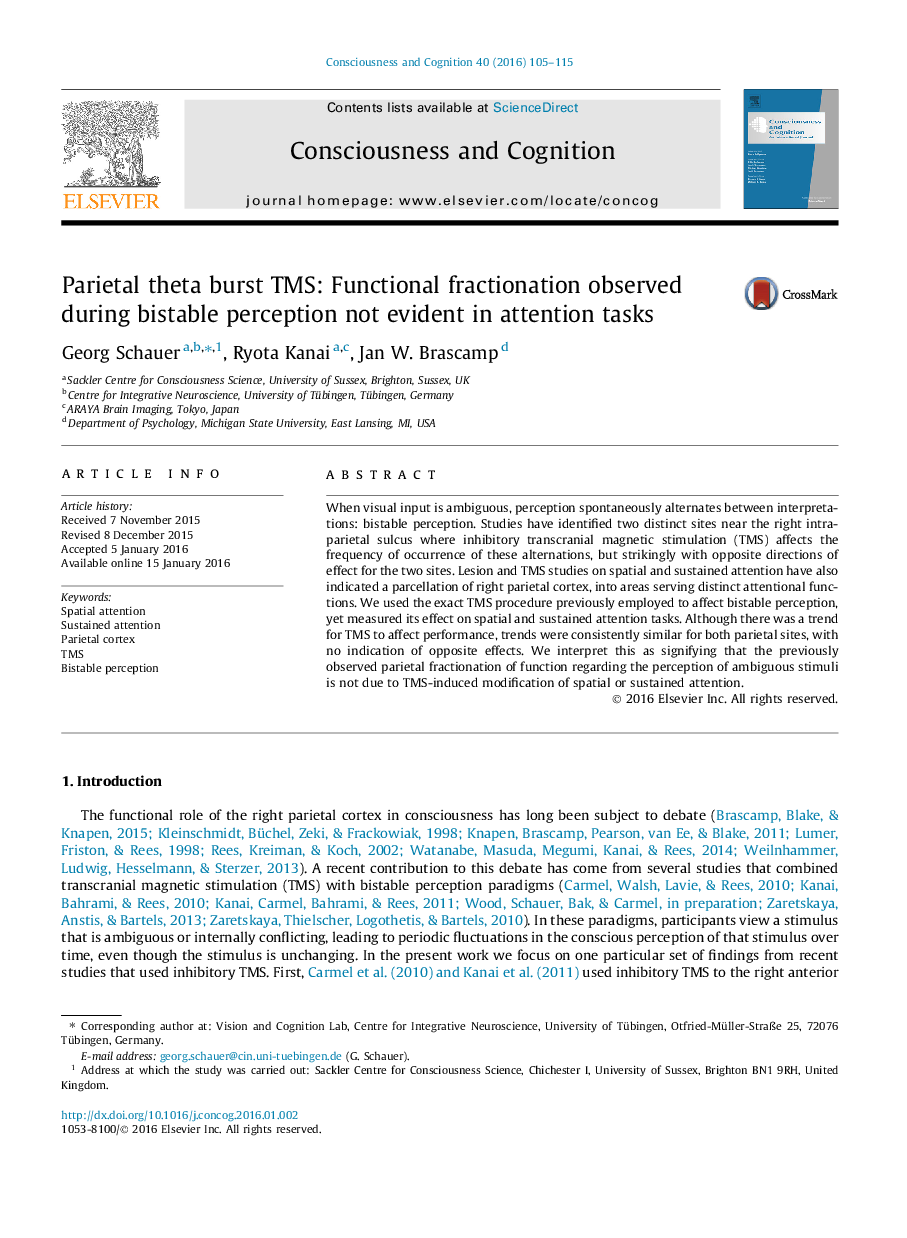| Article ID | Journal | Published Year | Pages | File Type |
|---|---|---|---|---|
| 927525 | Consciousness and Cognition | 2016 | 11 Pages |
•Two distinct regions of parietal cortex serve opposing roles in bistable perception.•This may be due to their importance to spatial and sustained attention.•Using TMS we show no parcellation into these regions for attention tasks.•No evidence that the parcellation for bistable perception is attention-related.
When visual input is ambiguous, perception spontaneously alternates between interpretations: bistable perception. Studies have identified two distinct sites near the right intraparietal sulcus where inhibitory transcranial magnetic stimulation (TMS) affects the frequency of occurrence of these alternations, but strikingly with opposite directions of effect for the two sites. Lesion and TMS studies on spatial and sustained attention have also indicated a parcellation of right parietal cortex, into areas serving distinct attentional functions. We used the exact TMS procedure previously employed to affect bistable perception, yet measured its effect on spatial and sustained attention tasks. Although there was a trend for TMS to affect performance, trends were consistently similar for both parietal sites, with no indication of opposite effects. We interpret this as signifying that the previously observed parietal fractionation of function regarding the perception of ambiguous stimuli is not due to TMS-induced modification of spatial or sustained attention.
